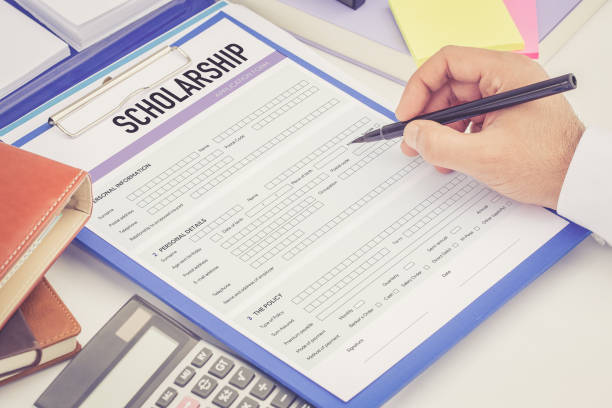Real Estate Contracts
Commercial Lease Contracts: Key Elements and Best Practices for Drafting and Managing Business Leases
Commercial lease contracts are integral to the operation of many businesses. Whether you are a landlord leasing space or a business tenant renting premises, understanding the key elements of commercial lease agreements is crucial for a successful and mutually beneficial arrangement. This guide provides insights into the essential components of business leases and best practices for drafting and managing these contracts.
1. Understanding the Basic Elements of a Commercial Lease
A commercial lease contract is a legally binding agreement between a landlord and a tenant for the rental of a commercial property. This document outlines the terms, conditions, and responsibilities of both parties during the lease period. Here are the essential elements you need to know:
Lease Term and Renewal Options
- Term Length: The lease term defines the length of the agreement, often ranging from 1 to 10 years. It’s important to negotiate a term that aligns with your business plan, offering both flexibility and security.
- Renewal Clauses: Renewal options allow tenants to extend their lease under predefined conditions. Negotiating favorable renewal terms can protect against sudden rent increases or losing your business space at the end of the lease.
Rent and Additional Expenses
- Base Rent: The base rent is the fixed amount paid monthly or annually for the use of the space. It is often calculated per square foot and varies by location and property type.
- Additional Costs: Commercial leases often include additional costs such as property taxes, insurance, and maintenance fees, which can be structured as either gross, modified gross, or triple net leases (NNN). Understanding these costs upfront is critical for budgeting purposes.
Security Deposits
- Deposit Amount: Security deposits are typically required upfront as protection for the landlord in case of damage or default. The amount usually equates to a few months’ rent, but this is negotiable.
- Conditions for Return: Clearly define the conditions under which the security deposit will be returned, such as vacating the premises in good condition and fulfilling all lease obligations.
Use of Premises
- Permitted Use: The lease should specify the permitted use of the property (e.g., retail, office, industrial). Ensure that the permitted use aligns with your business operations to avoid violations.
- Restrictions: Some leases may include restrictions on changes to the business type or the operations conducted within the space. These restrictions can impact your business’s ability to evolve over time.
Maintenance and Repairs
- Tenant Responsibilities: Clearly outline what maintenance tasks and repairs the tenant is responsible for, such as maintaining the interior or specific equipment.
- Landlord Responsibilities: The landlord is typically responsible for structural maintenance and common areas, though this may vary depending on the lease type. Ensure that responsibilities are clearly defined to avoid disputes.
2. Types of Commercial Leases
Understanding the different types of commercial leases will help you negotiate terms that best suit your business. Below are the most common lease structures:
Gross Lease
- Definition: The tenant pays a fixed rent, while the landlord covers property expenses such as maintenance, insurance, and taxes.
- Best For: Tenants who prefer predictable costs without worrying about fluctuating property expenses.
Net Lease
- Definition: In a net lease, the tenant pays a lower base rent but covers additional property expenses, such as taxes, insurance, and maintenance.
- Variations: There are three common variations of net leases:
- Single Net Lease (N): Tenant pays property taxes in addition to rent.
- Double Net Lease (NN): Tenant covers property taxes and insurance.
- Triple Net Lease (NNN): Tenant pays taxes, insurance, and maintenance.
- Best For: Tenants who are comfortable taking on more responsibility in exchange for lower base rent.
Percentage Lease
- Definition: The tenant pays a base rent plus a percentage of their business’s revenue generated at the leased property. This is common in retail leases.
- Best For: Retail businesses with fluctuating income, as the rent adjusts based on sales performance.
3. Negotiating Favorable Lease Terms
Negotiating the terms of your commercial lease contract is one of the most important steps in the leasing process. Here are some tips to secure favorable terms:
Negotiate Rent Escalation Clauses
Many leases include a rent escalation clause that increases rent annually or periodically during the lease term. Tenants should negotiate reasonable rent escalation percentages, ideally tied to an index like the Consumer Price Index (CPI) to avoid sudden, steep increases.
Address Tenant Improvements
If the leased space requires modifications or improvements (e.g., installing new fixtures or remodeling), negotiate who will bear the cost and how the work will be executed. Landlords may offer a tenant improvement allowance to help cover these expenses.
Sublease and Assignment Provisions
Negotiate for the right to sublease or assign the lease to another tenant. This can provide flexibility if your business grows and you need to relocate, or if you decide to downsize and sublet part of your space.
Early Termination Options
If your business needs are uncertain, it’s wise to negotiate an early termination clause. This allows you to exit the lease before the end of the term under certain conditions, such as paying a penalty fee or giving sufficient notice.
4. Best Practices for Managing Commercial Leases
Once the lease is signed, effective management is key to maintaining a positive relationship with the landlord and ensuring the lease is upheld properly. Here are best practices for managing your business lease:
Stay Organized
- Document Storage: Keep a copy of the lease and all related documents in a secure and easily accessible place. This includes addendums, rent receipts, maintenance agreements, and correspondence with the landlord.
- Calendar Key Dates: Use a digital calendar to track important dates, such as rent payment due dates, lease renewal deadlines, and scheduled maintenance.
Communicate Regularly
- Maintain Open Communication: Keep a positive line of communication with your landlord to address issues like repairs or changes to the premises. Open communication can help resolve disputes before they escalate.
- Request Modifications in Writing: Always communicate lease modifications, repairs, or disputes in writing, creating a formal record of all agreements.
Conduct Regular Inspections
- Routine Inspections: Perform regular inspections of the property to ensure everything is in working order and to document any maintenance needs. Report any issues to the landlord promptly.
- End-of-Lease Inspections: As the lease term nears its end, conduct a thorough inspection of the space. Make necessary repairs to avoid disputes over the security deposit return.
Conclusion
Understanding and effectively managing commercial lease contracts is essential for both landlords and tenants in the business real estate sector. By focusing on key elements like the lease term, rent, and tenant responsibilities, and by negotiating favorable terms such as renewal options and early termination clauses, you can create a lease agreement that supports your business goals.
Once the lease is in effect, maintaining open communication, keeping organized records, and conducting regular inspections will help ensure a smooth and successful leasing experience.
Mastering these practices will make the leasing process more predictable and manageable, enabling you to focus on running and growing your business with peace of mind.

